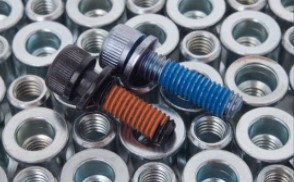Hotline: 4008816860
Hotline: 4008816860
The production process of screws, a vital component in myriad industries from construction to electronics, involves a meticulous series of steps ensuring precision, durability, and functionality. Here's a brief overview of the key stages in screw manufacturing:
1. Raw Material Selection: The journey begins with the careful selection of raw materials, typically metals like steel, stainless steel, brass, or aluminum, depending on the screw's intended use and required strength. The choice is based on factors such as corrosion resistance, strength-to-weight ratio, and cost.
2. Material Preparation: Once selected, the raw material undergoes preparatory steps like cutting into appropriate lengths or coils, followed by cleaning and deburring to remove imperfections that could affect the final product's quality.
3. Wire Drawing or Extrusion: For wire-formed screws, the material is drawn through a series of dies to reduce its diameter and increase its length, achieving the desired gauge. For other types, extrusion may be used to form the basic shape.
4. Heading: In this crucial step, the wire is fed into a heading machine, where it's cut to length and simultaneously formed into the screw's basic head shape. This process utilizes powerful dies and punches, ensuring accurate dimensions and uniformity.

5. Thread Rolling or Cutting: Depending on the screw type, the threads are either rolled (a process that deforms the metal to create threads) or cut (using a tool that removes material to form the threads). Rolling is often preferred for stronger, more fatigue-resistant threads, while cutting allows for greater versatility in thread designs.
6. Heat Treatment: Some screws require heat treatment, such as annealing, quenching, or tempering, to alter their physical properties and enhance strength, ductility, or corrosion resistance.
7. Plating or Coating: To improve corrosion resistance, enhance appearance, or provide specific functional properties, screws may undergo plating or coating processes, such as zinc plating, nickel plating, or applying a special coating like Teflon.
8. Inspection & Quality Control: Every screw undergoes rigorous inspection, both visually and mechanically, to ensure compliance with industry standards and customer specifications. Defective products are rejected, and the process is adjusted as needed to maintain quality.
9. Packaging & Shipping: Finally, the screws are sorted, counted, and packaged according to customer requirements. They're then labeled and prepared for shipment to various industries worldwide.
This streamlined yet comprehensive process ensures that every screw produced meets the highest standards of quality and performance, ready to fasten and secure countless applications across diverse sectors.